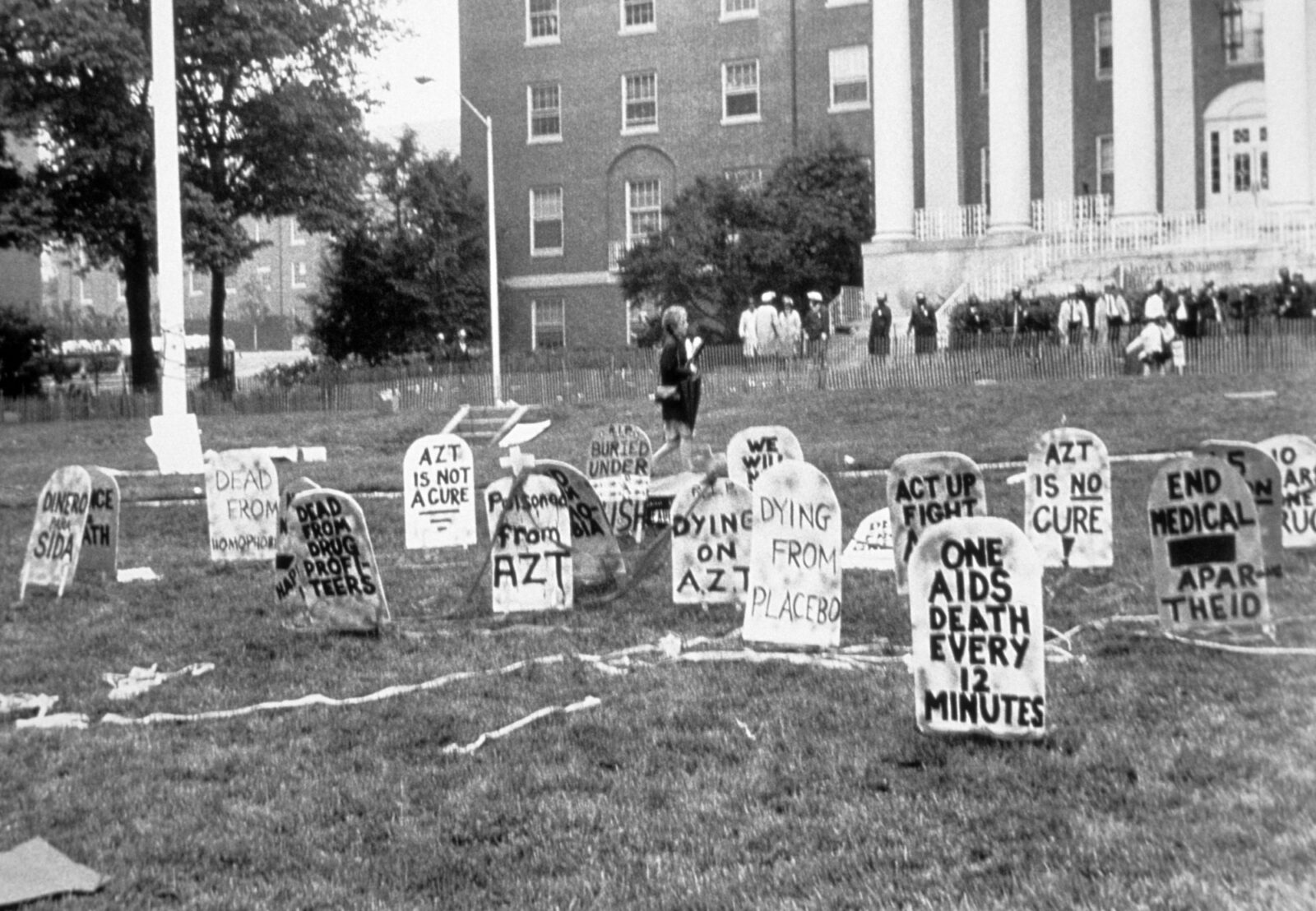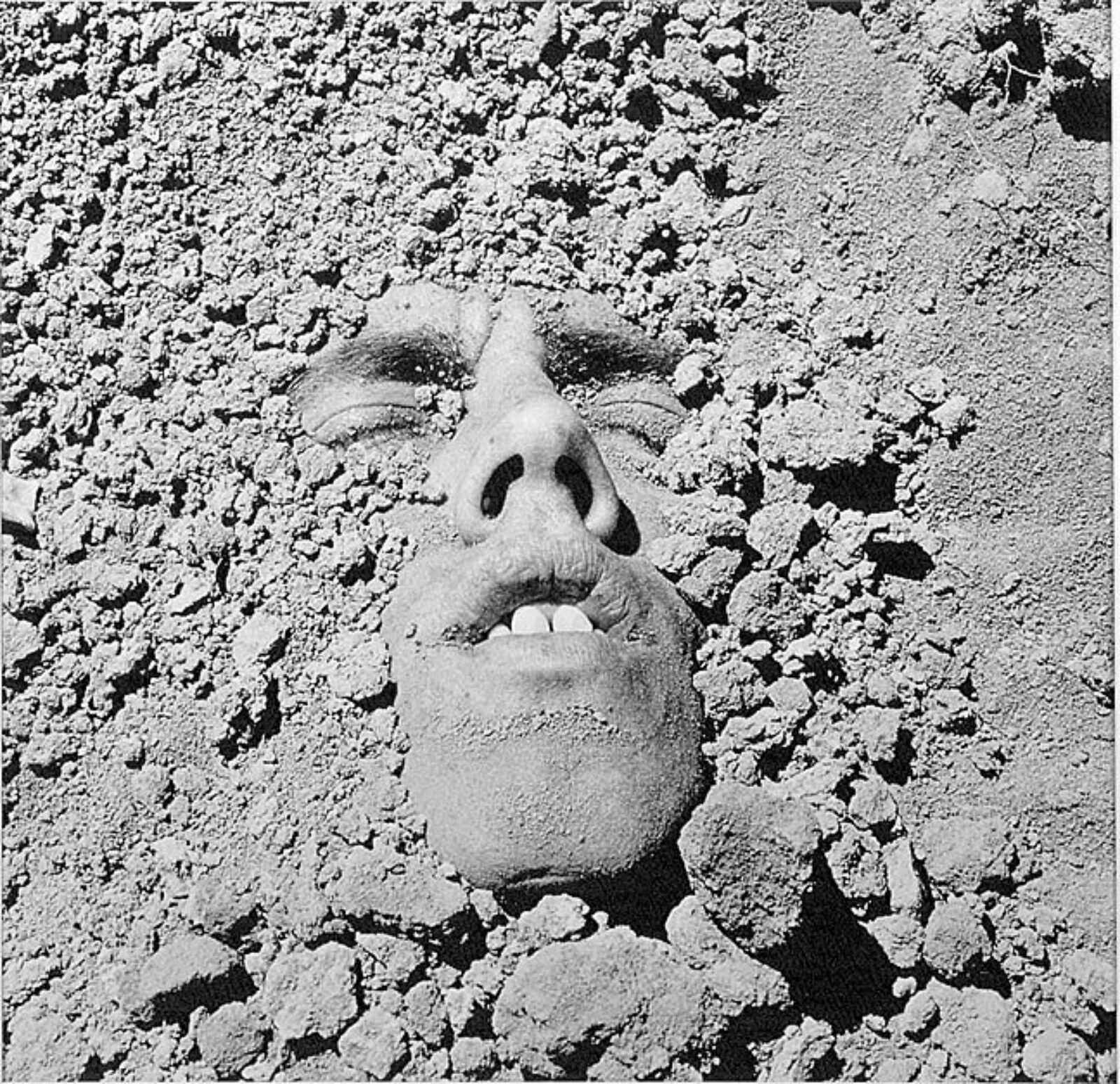













![Untitled [table setting card]](https://storage.googleapis.com/visualaids-galleries/galleries/tongues-untied/_fullWidth/Untitled_2387.jpg)














featured gallery for March 2017
Tongues Untied
In the spring of 2015, I organized Tongues Untied at The Museum of Contemporary Art, Los Angeles. Presented in coordination with the 30th anniversary of the city of West Hollywood at MOCA’s Pacific Design Center location, Tongues Untied featured a selection of works from the museum’s permanent collection made during the historical period of the HIV/AIDS crisis. The inspiration and centerpiece of the exhibition was Tongues Untied (1989), activist, artist, and writer Marlon Riggs’s landmark film about the very real and very personal experiences of being black and gay in America. A mix of documentary and archival footage, talking-head interviews, poetry, and dance, the film is an elegiac and erotic portrait of “black men loving black men” in the face of racism, homophobia, and alienation. Tongues Untied focuses on a community of poets and activists (Joseph Beam, Essex Hemphill, and Alan Miller among others), giving voice to a multiplicity of perspectives through a lyrical and rhythmic collage of image and sound.
I was interested in the way that the film moved between expressions of pleasure, pain, rage, and humor to offer a kind of collective portrait of black gay life, one that was and arguably continues to be almost absent in mainstream media and popular culture. I sought to expand on Riggs’s video essay and the way it located desire, tenderness, aggressivity, and humor as equally valuable modes of expression as it spoke “truth to power,” as they say.
As I began to select works from MOCA’s collection, works that were either quite directly engaged in conversations surrounding the AIDS crisis, or works that were more ambiguous, I was struck by how many of them could be seen as playing with notions of portraiture, even when they did not function as portraiture per se. Of course, it is not surprising that at a moment transformed by grief and mourning, memorialization would become a primary mode of address. Works by both well-known artists like Ross Bleckner, Karen Finley, Nan Goldin, Felix Gonzalez-Torres, Gran Fury, and Jack Pierson, as well as works by lesser-known artists such as John Boskovich, Adam Rolston, Leslie Thornton, and Catherine Wagner, positioned the body as a site of contestation—the body claimed by disease or illness, but also by pleasure and sexual gratification; the body as loss, but also as renewal. These works used the body (even in absence) as a means to navigate desire, love, and loss as well as to refuse the stigmatization of AIDS broadcast into our homes every night on TV.
The works by Robert Blanchon, Rodney Brown, Mark Carter, Bruce Cratsley, Tony Feher, Robert Ford, Felix Gonzalez-Torres, Tony Greene, Edward Hochschild, Charles Hopkinson, Peter Hujar, W. Benjamin Incerti, Ronald Lockett, Charles Long, Mark Morrisroe, Hugh Steers, David Wojnarowicz and Martin Wong selected for Visual AIDS March Gallery focus on gay male representation, expanding upon themes explored in the exhibition. Looking almost exclusively to historical works, with the exception of Charles Long’s Dirty & Proud (2014), which reconfigures the iconic “SILENCE = DEATH” logo, the gallery moves between and across the somber, sentimental, ecstatic, erotic, and elegiac as it depicts the gay male or, in one instance, transgender body. In images when the body does not appear, objects such as dead flowers, a mirror, two clocks, soiled underwear, or a string of lights serve as a series of memento mori, reminding the viewer of the abject frailty and transience of life lived during the plague years of the AIDS crisis. Yet these images, sobering as they may be, appear alongside those of bodies embracing, caught in moments of erotic pleasure, suggesting that depictions of tenderness, of love lived as well as lost, offer an equally valuable form of revolution.
